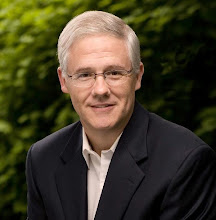
It's easy to underestimate the fantasy form, especially when it's a Disney family picture like Enchanted. But writer Bill Kelly knows his genre and its potential, especially when it's mixed with other forms.
Enchanted is really a combination of fantasy, fairy tale, romantic comedy, musical and the traveling angel story. That's a lot of forms, which is why this film is more complicated than it appears. Most writers trying to mix all those genres end up with a structural mess. Too many heroes, too many desire lines, too many story beats and so on. But Kelly makes it work.
One reason for the film's success is that Kelly has combined genres that work well together. Fantasy and musical have very similar thematic underpinnings. Both are about learning how to live well, which they define as forming a community. Love stories are about creating a community of two. The traveling angel story concerns a (usually) perfect person who enters a community in trouble and sets it right.
Now all of this thematic unity doesn't change the fact that mixing so many forms is tricky. Kelly starts by establishing the foundation of the story, which is the fantasy and fairy tale opening world. Though an apparent utopia, the world has a big flaw, which is the jealous queen. And the princess, though apparently perfect and about to be married, has a flaw as well. She has no emotional depth and therefore is about to marry the wrong person. One of the nice touches here is that the audience is no more aware of this at the beginning than is the princess. The viewer, having seen decades of Disney films, is as caught up in the promise of fairy tale life as the princess is. But this weakness is crucial because it creates the need in one of the lovers that is essential for a good love story.
With the foundation set, the heroine travels to the second, fantastical world. Ironically this film flips the beat and makes the second world all too real, modern day New York. But for the Princess it is a nightmare, a dystopia, and, true to the fantasy form, it is where the heroine will learn her great life lesson. It is also where the traveling angel plot kicks in. Using music and her own boundless, fairy tale optimism, she begins to help the characters who are in trouble and turns the cold New Yorkers in Central Park into a utopian community.
This is also where the love story line resumes. The man who helps her out has his own weakness and need. He's a single dad who doesn't believe in love. He needs to feel love again, for himself and his daughter. From this point on the film plays out the key beats of the fantasy, love story and traveling angel story. One of the fun aspects of modern fairy tales is seeing how the writer comes up with modern equivalents of fairly tale elements, like transformations, spells and kingdoms. For example, when the Princess finds herself in need of a fairy godmother, the daughter pulls out the greatest wish fulfiller of all time, dad's credit card.
Hollywood blockbuster films are all about mixing genres. Even pleasant little children's stories are more difficult than they appear, because they usually require a lot of forms. If you are interested in modernizing a fairy tale - which is a very successful story strategy - check out the Great Screenwriting Class. For fantasy, of course, go to the Horror, Fantasy and Science Fiction Class or the Fantasy Software. You can learn Romantic Comedy in the Love Story Class or Software, or in the Comedy Class or Software. I explain the ever-popular Traveling Angel story in the Comedy Class and Software.
Above all, try to combine forms that work well together. In Enchanted, writer Bill Kelly shows the tremendous advantage that comes from knowing your craft.
